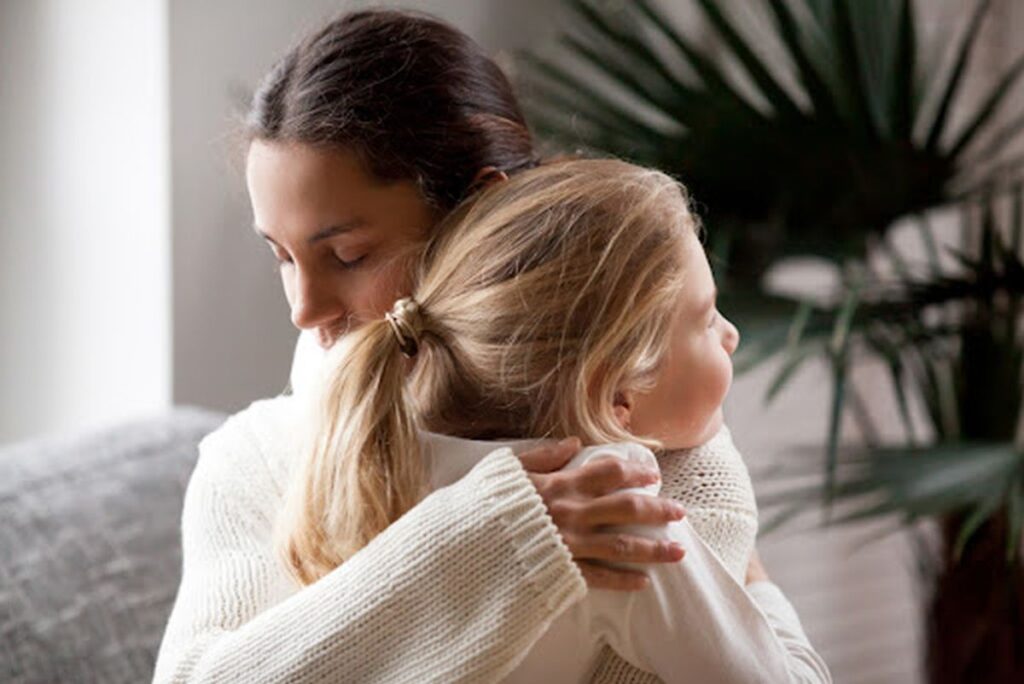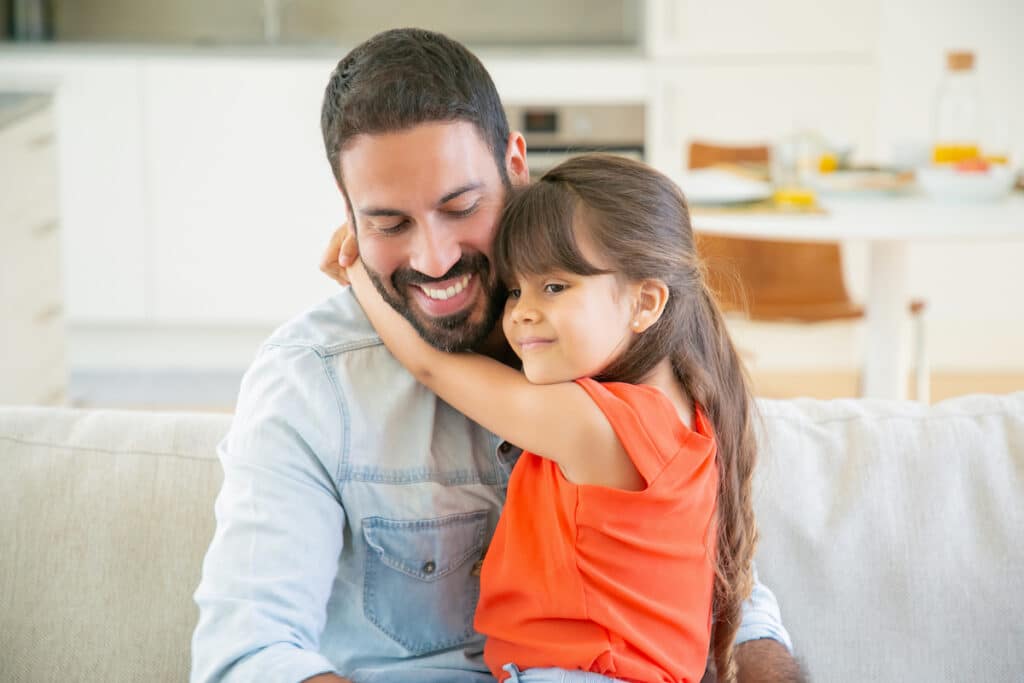
Effective communication with children is essential for building strong relationships and connecting with them on a deeper level. It’s an ongoing process of learning and growing that can foster trust and understanding between parents and their children. By actively listening to their needs and desires, parents can guide their children toward healthy and balanced development. They can prepare them for the challenges they will face as responsible adults in an ever-changing world. As parents, we recognize the fundamental role that communication plays in helping kids feel heard, understood, and supported in their growth and development.
Understand How Kids Communicate
In the journey of connecting with your kids and nurturing a thriving parent-child relationship, harnessing the power of understanding their developmental stages of communication becomes an invaluable tool.
Children rely heavily on non-verbal cues to convey their thoughts, emotions, and desires. Paying close attention to their facial expressions, body language, tone of voice, and gestures allows you to decipher their messages and respond in a way that positively resonates with them.
If you attentively observe these non-verbal cues, you acquire valuable insights into your child’s inner world, enabling you to communicate with them most effectively. When you respond sensitively to their cues, you create an environment of understanding, validation, and support. This cultivates a deeper connection between you and your child, establishing a solid foundation for a meaningful and fulfilling relationship.
When it comes to connecting with your kids, remember that effective communication goes beyond verbal expression. It also involves understanding and interpreting non-verbal signals. By mastering the art of observing and interpreting these cues, you can learn how to connect with your kids on a deeper level.
👉 Ready to regain control of your emotions and create a calm, loving environment for your kids? Don’t miss our guide on how to stop yelling and promote harmony. Find out more in the article: The Calm Parent Guide: How to Stop Yelling at Your Kids and Foster Harmony.
Efficient Communication With Children: 10 Actions That Get Results
Effective communication with children requires empathy, patience, and the ability to adapt your communication style to meet their developmental needs, fostering trust and understanding in the parent-child relationship. You also have to use age-appropriate communication strategies in order to succeed.
In the following pages, we present some ways to communicate. Here are 10 actions that get results.
1. Avoid Lecturing
To establish effective communication with children it’s important to avoid falling into the trap of lecturing. Lecturing tends to create a one-sided conversation where the child may feel overwhelmed or tuned out. You are wondering how to talk so kids will listen? The answer is simple: by using active listening and open dialogue.
2. Listen to Your Child, Even if You Disagree
By listening to your child, even when you hold different opinions, you demonstrate a profound respect for their thoughts and feelings. This act of attentive listening communicates that their perspective is valued and nurtures an environment of honest communication between the two of you.
3. Encourage Communication Through Play
Encourage communication with children through play as they continue to grow. Parenting may take on a more serious tone as they mature, but prioritizing shared fun and lighthearted conversations is key to building a stronger bond.
Seek connections by embracing their interests, sharing positive affirmations, and exchanging jokes. Remember, laughter is vital in creating a joyful atmosphere with your child, but always ensure that it is laughter shared together, never at their expense.
4. Strike-Up Conversations Between Activities
To initiate conversations with your children and effectively communicate with them, it is important to acknowledge their perspectives and create a comfortable environment. This will carry you on the path of gaining insight into their creative and imaginative world.
Parents may face challenges in being authoritative figures but, developing a friendly bond with their children from an early stage can have a profound positive impact on their emotional development.
5. See Things From Your Children’s Viewpoint
When engaging with young children, it is essential to understand or imagine their point of view, especially during challenging moments. Remember that their perspective might be distinct from yours, as they are guided by emotions rather than logic. By stepping into their shoes and seeing things from their viewpoint, you can recognize what doesn’t work and respond with love to repair and improve the situation.
6. Know When to Talk and When Not to Talk
Being a good listener goes beyond simply hearing your kids’ words. It involves understanding the importance of timing in communication, especially when it comes to communicating with children.
Knowing when to speak up, knowing, knowing how to talk to kids and when to hold back allows for meaningful and effective conversations, where your kids feel genuinely heard and valued. By mastering this skill, you create an environment that encourages open dialogue and fosters stronger connections with your children.
Take time to actively listen to their thoughts, feelings, and concerns without interrupting or rushing to provide solutions. Show empathy and validate their experiences, allowing them to express themselves fully and you will learn how to communicate with children so that they listen to you.
By prioritizing effective communication with your children, you not only strengthen your relationship but also teach them the value of respectful and attentive listening in their interactions with others.
7. Use of Positive Language and Reinforcement
Do you know how to talk to kids ? Effective communication with a child involves using positive communication and reinforcement. When you consciously choose your words and express yourself in a positive and uplifting manner, you create an atmosphere of encouragement and support that cultivates your child’s self-esteem. By providing positive reinforcement for their efforts and achievements, you contribute to enhancing their sense of self-worth, empowering them to develop a strong belief in their capabilities, and fostering a resilient mindset.
8. Empathetic Communication and Validating Emotions

Empathetic communication and validating emotions play a significant role in developing your child’s emotional intelligence and resilience. It entails acknowledging and accepting their feelings in the present moment, whether it is happiness, sadness, anger, or any other intense emotion, without passing judgment or expecting them to feel differently. This process of validation is not about fixing, correcting, or providing advice; rather, it involves understanding the situation from their perspective and empathizing with their experiences.
9. Encouraging Children to Express Themselves and Ask Questions
If you encourage your children to freely express themselves and ask open-ended questions, you significantly contribute to their development. By posing questions such as “What do you think would happen if…” or “Why do you think…” children engage in critical thinking and cultivate curiosity, empowering them to explore and gain a deeper understanding of the world around them.
10. Setting Boundaries and Limits While Maintaining Open Communication
Engaging in conversations with kids, finding the right balance between setting boundaries, and maintaining open communication is an important parenting tool. By establishing clear limits, children learn essential values and develop a sense of structure and responsibility in their lives.
It is equally important to maintain an environment of open dialogue, where children feel heard and respected. This initiates healthy communication and creates an opportunity for them to freely express their thoughts and emotions, fostering a strong parent-child relationship founded on trust and mutual understanding.
👉 Are you struggling with setting boundaries or with saying ‘no’ to your child? Unlock the importance of this simple word and its positive impact on your child’s character. Dive into the article: The Power of ‘No’: Understanding the Importance of Saying No to Your Child.
The Language Develops Good Communication With Children
As a parent, when you use non-judgmental language that provides objective information, such as saying “I noticed that you didn’t finish your homework on time” instead of “You’re so lazy, you never finish your work,” you help children develop good communication skills. This approach encourages them to express themselves openly and feel supported in their communication efforts, creating an environment for effective and meaningful interactions.
Learning how to talk with kids is an ongoing lesson for parents. Being cautious and flexible means embracing mistakes, respecting differing opinions, and exploring various possibilities. For instance, when discussing their preferences, being flexible allows parents to adapt plans to accommodate their child’s evolving opinions.
When communicating with children, it is important to prioritize the specific situation at hand rather than making sweeping generalizations with words like “always” and “never” – positive communication is the key. Children have a tendency to interpret such words literally, which can result in misunderstandings or unnecessary anxiety. By being specific and avoiding absolute statements, parents promote clearer and more effective communication, facilitating positive interactions with their children.
To be a good parent, it is important to develop your listening skills within your relationship with your child. By doing so and actively seeking the positive aspects in difficult traits, such as a strong-willed nature.
You can help your child channel their determination towards achieving their goals and foster their leadership qualities. This approach promotes their personal growth and resilience, enabling them to overcome challenges and thrive.
Understand and Use Nonverbal Communication With Children

Maintaining eye contact with young children demonstrates your attentiveness and interest in what they are saying. However, it’s important to note that older children and adolescents may not appreciate prolonged eye contact.
Engaging in conversation while walking along or driving in the car can be more effective in connecting with older children and adolescents. This casual and relaxed setting allows for a more natural flow of conversation, creating a comfortable environment where they may feel more open to sharing their thoughts and experiences.
When engaging in conversation with your child, pay attention to your body language. Adopt an open and welcoming stance by keeping your arms uncrossed, standing or sitting in a relaxed manner, and offering a friendly smile.
These non-verbal cues signal to your child that you are approachable, attentive, and ready to listen, creating a positive and inviting atmosphere for open communication and meaningful connection.
Effective communication with children can be challenging, requiring a positive tone and mindset to serve as a good role model. Children are highly perceptive to nonverbal cues, making your facial expressions and tone essential for establishing effective communication.
While it may not always be easy to use the ideal tone in every situation, consistently aiming for a calmer tone with children is beneficial. Your ability to regulate and control your tone of voice during conversations plays a significant role in the effectiveness of your communication with children.
Active listening promotes a sense of being heard and understood in children. Using gestures like encouraging smiles and affirming nods demonstrates your engagement and genuine concern for what your child is expressing. Additionally, getting down to their eye level while they speak fosters a sense of safety and connection.
Demonstrate your attentive listening by asking questions such as “What?”, “Why?”, and “How?”, allowing your child to develop their communication skills by learning how to share a story and include important details. This practice not only enhances their communication abilities but also strengthens the bond between you and your child.
Utilizing mirroring techniques, such as restating what children have expressed or affirmatively nodding, proves to be an effective approach to improving communication styles for kids. Mirroring serves as a validation of their thoughts and emotions, demonstrating your active listening and genuine understanding of their point of view.
Physical touch, such as a warm hug or gentle pat on the back, can play a significant role in a positive relationship with your child during conversations. These gestures of affection can make them feel loved, valued, and supported, creating a safe space for open and honest communication.
Building a Positive Communication Environment
If you want to build a positive communication environment, it is important to create a safe and comfortable space where children can freely express themselves. The environment’s noise level, lighting, and visual distractions can significantly impact their ability to use language effectively and communicate with others.
Excessive noise can make it difficult for children to hear and understand spoken words, leading to communication challenges. Similarly, providing appropriate lighting and minimizing distractions can enhance their focus and language development during conversations.
Establishing daily communication routines and rituals is an essential aspect of fostering effective communication with children. If you implement consistent and structured communication practices, such as daily check-ins or dedicated conversation times, you create a sense of predictability and open avenues for meaningful dialogue. Additionally, employing age-appropriate communication strategies is vital in ensuring that your interactions resonate with the child’s development stage and abilities, allowing for clearer understanding and engagement.
Modeling effective communication and problem-solving skills when interacting with your child it’s very useful. If you demonstrate active listening, empathy, and respectful communication, you provide a valuable example for them to follow. Also, involving your child in collaborative problem-solving discussions allows them to learn effective strategies for resolving conflicts and finding solutions.
Conclusion
As parents, it is essential to understand the developmental stages of communication in children. Following some simple steps presented above we can effectively navigate their unique communication needs and create a safe and open environment for them to express themselves.
Utilizing positive language and reinforcement, along with validating their emotions, helps cultivate an atmosphere of trust and understanding. Moreover, by actively listening, employing age-appropriate communication strategies, and modeling effective communication and problem-solving skills, we serve as role models, shaping their own communication abilities. With continuous practice and encouragement, we can strengthen our connections with our children and foster lifelong skills in effective communication.
Ready to supercharge your parenting skills? Join our online masterclass, “How to Talk so Kids Will Listen: 3 Proven Methods,” and you will learn how to connect with your kids and also positive communication techniques. Elevate your parenting journey today!
References:
Asamenew, D. B., & Pillay, J. (2017). Perceived parent–child communication and well-being among Ethiopian adolescents. International Journal of Adolescence and Youth, 23(1). https://doi.org/10.1080/02673843.2017.1299016
Bell, J., & Condren, M. (2016). Communication Strategies for Empowering and Protecting Children. The journal of pediatric pharmacology and therapeutics : JPPT : the official journal of PPAG, 21(2), 176–184. https://doi.org/10.5863/1551-6776-21.2.176
Bullo, A., & Schulz, P. J. (2022). Parent-child Communication, Social Norms, and the Development of Cyber Aggression in Early Adolescence. Journal of Youth and Adolescence, 51, 1774 – 1786. https://doi.org/10.1007/s10964-022-01625-1
Dimatteo M. R. (2004). The role of effective communication with children and their families in fostering adherence to pediatric regimens. Patient education and counseling, 55(3), 339–344. https://doi.org/10.1016/j.pec.2003.04.003









